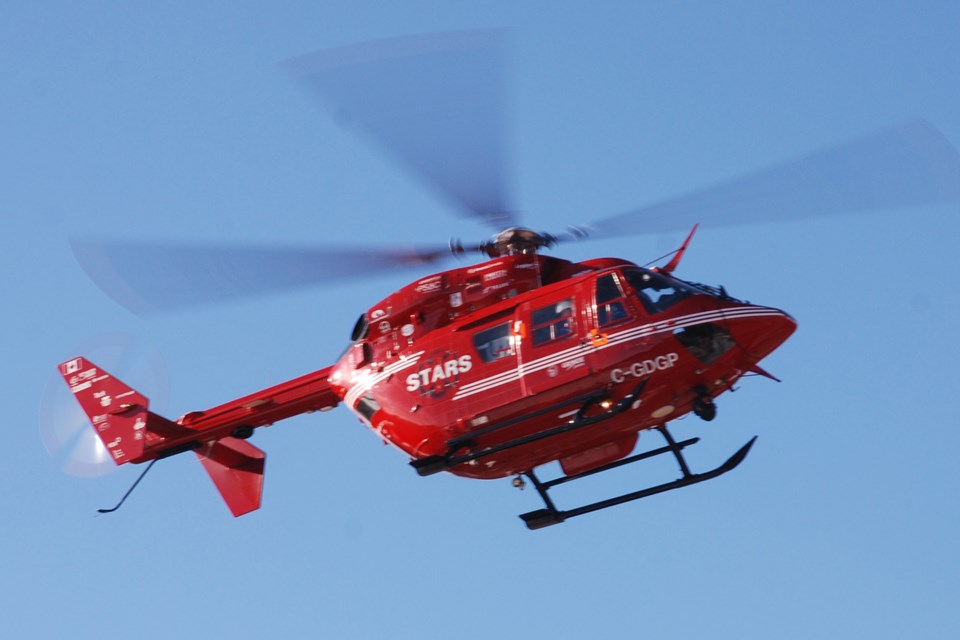With the number of remotely piloted devices starting to soar almost as high as the drones themselves, officials are urging the public to operate them safely – especially in communities with hospitals that have landing pads for STARS air ambulances.
“As the public use of drones and laser pointers steadily increases, STARS is raising awareness to ensure these devices are used safely and responsibly for the safety of its aircraft, crew and patients,” reads part of a press statement issued on the morning of Friday, Aug. 30 in the lead-up to the Labour Day long weekend.
“The use of drones and lasers near aircraft in areas such as helipads, emergency scenes, or airports can pose a real threat to aircraft safety,” reads the presser, going onto add the potential risks vary and include the possibility of either distracting and disorientating pilots by creating a glare in the cockpit or blocking the flight path.
“The risks of unsafe drone and laser usage can impact the crew and cause further harm to the patients STARS serves.”
In the event a situation should escalate, legal action under the Aeronautics Act could be pursued against anyone using a laser or a drone close to an aircraft.
“We want people to enjoy using their drones and lasers, but to do so safely,” Frank Eigenbrood, STARS director of safety and quality, is quoted as saying in the presser.
“Drones flown irresponsibly near our flight paths can endanger our crew and our patients onboard. So, we are looking to our community and our supporters to help raise awareness of these dangers and to prioritize safety over curiosity,” said Eigenbrood.
Throughout the operation of their missions, STARS flight crews already face a number of challenges ranging from weather and harsh terrain to populated residential subdivisions and dense city landscapes. Recognizing such situations are of course all a part of operating an air ambulance that can make navigation more difficult, these variables “are uncontrollable and sometimes unavoidable.”
But unlike the more unpredictable nature of the weather and terrain that a flight crew might be expected to fly through, drones and lasers can not only be controlled but also avoided outright, and officials say ensuring there are no added stressors throughout a mission is crucial.
“Our pilots and crew members are highly trained to handle a variety of challenges, but the increased use of lasers and drones – especially this summer – near our aircraft is a growing concern,” Jason Arthur, STARS director of flight operations, was quoted as saying.
“From night operations to challenging conditions, our pilots try to minimize these hazards which can disrupt critical rescue missions and put both our crew, patients and the communities we serve at risk,” said Arthur.
Per government regulations, all drones weighing anywhere between 250 grams and 25 kilograms must be registered and subsequently marked with the device’s registration number.
While STARS encourages all drone and laser operators to be responsible and courteous by avoiding their use near airports, helipads or emergency scenes, operators can still legally fly drones anywhere they can see the device at all times at altitudes below 122 metres, 1.9 kilometres from heliports and 5.6 kilometres from airports as well as controlled airspaces, and away from emergency sites and advertised events.



